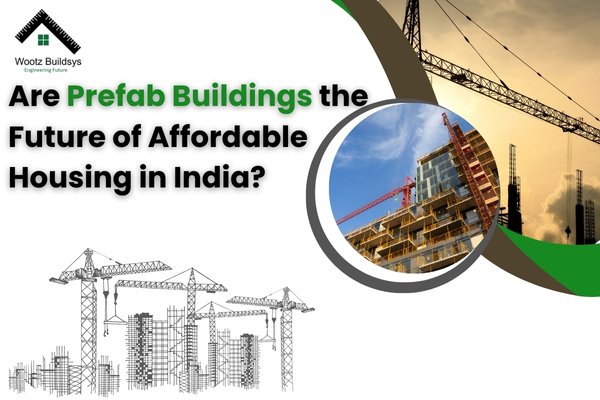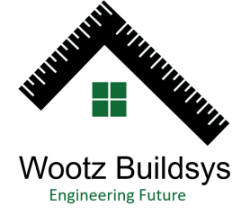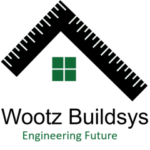
India is at a pivotal moment, facing a huge demand for affordable housing across urban and rural areas. Millions of Indian families dream of owning a secure, modern home without waiting years or breaking the bank. But with soaring land prices, lengthy construction times, and environmental challenges, conventional brick-and-mortar methods are struggling to meet this demand. This is where prefab buildings—also known as prefabricated or modular buildings—are emerging as a game-changing solution. But can prefab buildings truly be the future of affordable housing in India? Let’s dive into the facts, trends, and advantages that are positioning prefab as the way forward for Indian families and builders alike.
What Are Prefab Buildings?
Prefab buildings are constructed using components (such as walls, floors, and roofs) manufactured in a controlled factory environment. These pre-made sections are then transported to the site for quick assembly. Unlike traditional construction—where everything is built from scratch at the site over many months—prefab buildings are put together like giant building blocks, slashing project timelines and costs.
Key Features of Prefab Buildings:
- Quicker construction compared to traditional methods
- Consistent quality and fewer defects due to factory-controlled manufacturing
- High customizability and flexibility
- Eco-friendly with less waste
Why is Affordable Housing Critical for India?
India’s urban population is growing rapidly. Government data suggests the housing shortage runs into millions of units—particularly in the economically weaker and low-income segments. Urban migration, rising aspirations, and recurring issues with informal settlements make the quest for affordable, durable homes more urgent than ever. The central government’s ambitious drives like Pradhan Mantri Awas Yojana (PMAY) and “Housing for All” aim to bridge this gap swiftly.
How Prefab Buildings Address India’s Housing Needs
1. Time Savings
Prefab buildings are 2x to 3x faster to construct. While a typical house can take 12-24 months to complete, prefab homes can be delivered in just 3-6 months—sometimes even quicker for smaller units.
2. Affordability
One of the strongest advantages: cost efficiency. By assembling homes in a controlled environment, prefab construction reduces labor, raw material waste, and project delays. Estimates show that prefab homes can be 20–50% more affordable than traditional builds, with costs starting from as low as ₹1,000–₹1,500 per square foot against ₹2,000–₹5,000 for conventional homes. This cost savings is a game-changer for first-time home buyers, the low-cost rental sector, and government housing projects.
3. Quality & Durability
Factory production ensures uniform quality for every building component. Modular construction also allows strict quality checks before a component even reaches your site, resulting in stronger and longer-lasting homes.
4. Sustainability
Prefab buildings use less water and cement—resources that are fast depleting in Indian cities—and generate minimal construction waste. This makes modular homes an environmentally responsible choice, aligning well with India’s goal of more sustainable urban growth.
5. Government Support
Schemes like PMAY, Light House Projects, and Smart Cities emphasize swift, scalable, and affordable housing delivery. These programs actively promote and deploy prefab methods, accelerating adoption as a mainstream housing solution.
The Growing Trend: Prefab Buildings in India
India’s prefabricated buildings market has exploded in recent years. Key trends include:
- Rapid Urbanisation: Cities need homes fast—prefab matches the pace.
- Technological Advancements: Innovations like 3D printing, robotics, and advanced automation are boosting manufacturing speed and lowering costs.
- Market Growth: The prefabricated building market in India is projected to reach $15.3 billion by 2033, growing at more than 7% CAGR.
- Government Projects & Lighthouse Demonstrations: Large-scale initiatives are proving prefab’s viability across states, with technologies like Precast Concrete in Chennai and Light Gauge Steel in Agartala being implemented as model projects.
Prefab vs. Traditional Housing: A Comparison
| Aspect | Prefab Buildings | Conventional Construction |
| Speed | 2x to 3x faster (3–6 months) | 12–24 months (often delayed) |
| Cost | 20–50% less; ₹1,000–₹3,000/sq.ft | ₹2,000–₹5,000/sq.ft |
| Quality | High, controlled by factory standards | Varies, depends on site conditions |
| Waste & Sustainability | Minimal, eco-friendly | More waste, high water usage |
| Labour | Less, due to automation | High, often unskilled |
| Customization | Modular & flexible designs | Flexible but time-consuming |
Real Success Stories in India
Many Indian cities and states are already building affordable homes using prefab buildings:
- Light House Projects: Across cities like Chennai, Lucknow, and Agartala, government-supported initiatives demonstrate the speed and efficiency of prefab technologies.
- Private Sector Adoption: Top builders are adopting prefab to deliver budget homes at scale and quality, making homeownership possible even for low-income families.
Challenges to Widespread Adoption
Despite the promise, some challenges remain:
- Lack of widespread awareness among homebuyers and developers about prefab advantages.
- Transportation bottlenecks for carrying large prefab components to remote sites.
- Standardization of building codes and regulatory approval processes.
- Consumer misconceptions about prefab homes being less durable or stylish (which modern technology is proving false).
With greater government support and public education, these hurdles are being gradually overcome.
Future Outlook: Are Prefab Buildings Here to Stay?
All signs point to yes—prefab buildings are not just a trend but a long-term solution to India’s affordable housing challenge. With strong government backing, market growth, environmental benefits, and improved technology, prefab is transitioning from an alternative curiosity to a mainstream necessity.
Frequently Asked Questions (FAQs)
1. Are prefab buildings really cheaper than regular houses in India?
Yes! Cost estimates show prefab houses can be 20–50% more affordable due to less waste, lower labour costs, and controlled, speedy production.
2. How long does it take to build a prefab home?
A typical prefab house can be built and installed in 3–6 months, much faster than the year or more needed for traditional methods.
3. Are prefab homes durable and safe for Indian weather?
Absolutely. Modern prefab buildings are engineered to withstand heavy rain, heat, cyclones, and even earthquakes. Many are built with strict quality and safety checks for Indian climates.
4. Can I customize my prefab home’s design?
Yes! Modular designs allow for a wide range of sizes, layouts, aesthetics, and finishes. Many suppliers offer tailored solutions to suit your needs.
5. Are prefab buildings eligible for government housing schemes?
Yes, many government affordable housing and urban renewal schemes in India now embrace prefab technologies, and several Light House Projects showcase this nationally.
Conclusion
Prefab buildings are steadily reshaping India’s housing landscape. They offer what Indian families need most—speed, affordability, durability, and environmental responsibility. As more success stories and government-backed demonstrations emerge, it is increasingly clear: Prefab buildings are not just the future, but the new reality of affordable housing in India.
If you’re a prospective homebuyer, developer, or policymaker, it’s time to consider prefab buildings as your top choice for building India’s future.
cerutu4d jacktoto toto slot rtp slot jacktoto situs toto rtp live situs judi bola jacktoto sangkarbet cerutu4d cerutu4d cerutu4d jacktoto cerutu4d cerutu4d sangkarbet jacktoto panached rtp slot rtp slot situs slot situs slot rtp slot rtp slot jacktoto jacktoto jacktoto link slot link slot link slot situs toto situs toto situs toto jacktoto jacktoto jacktoto jacktoto jacktoto jacktoto jacktoto jacktoto jacktoto palembangpafi jacktoto jacktoto login cerutu4d situs togel cerutu4d prediksi hk bandar togel situs slot cabe4d cabe4d rimbatoto cabe4d rimbatoto cabe4d rimbatoto toto slot pam4d kampungbet toto slot cerutu4d jacktoto bandungpafi toto slot link slot resmi situs togel judi bola cerutu4d cerutu4d cerutu4d jacktoto cerutu4d cerutu4d cerutu4d cerutu4d cabe4d sangkarbet cerutu4d jacktoto jacktoto cerutu4d cerutu4d slot online jacktoto cerutu4d jacktoto sangkarbet pam4d toto slot cerutu4d cerutu4d cerutu4d link slot cerutu4d cerutu4d cerutu4d cerutu4d cerutu4d cerutu4d cerutu4d link slot toto slot cerutu4d cerutu4d cerutu4d cerutu4d link slot cerutu4d cerutu4d situs togel terpercaya pam4d pam4d slot gacor rtp slot toto togel toto slot pam4d pam4d situs togel toto togel toto togel toto togel situs toto situs toto situs toto situs toto slot gacor jacktoto jacktoto slot online grenetwork.org shortlybusiness.com cerutu4d cerutu4d cerutu4d sangkarbet cerutu4d


